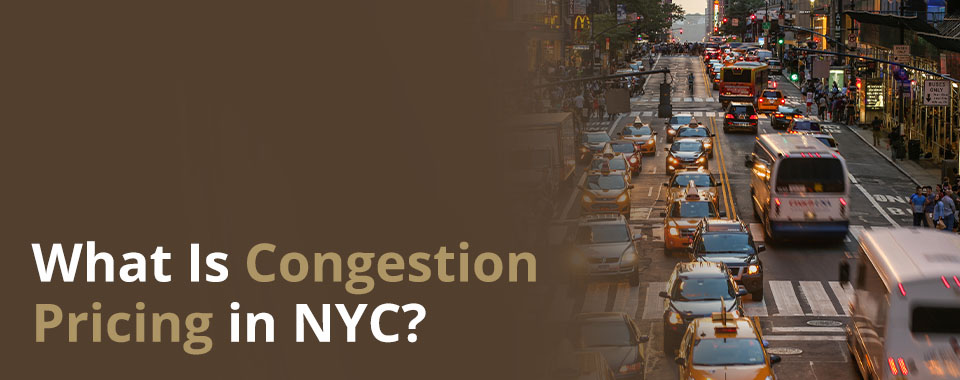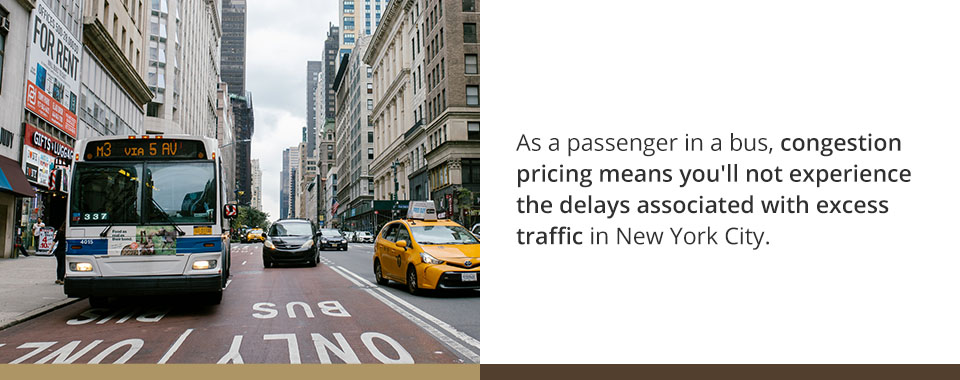
New York traffic can be crazy — so crazy it can make you miss important appointments, interviews or business meetings. The board of the Metropolitan Transportation Authority (MTA) voted to approve new charges for getting into the city, a move seen as a response to the high traffic during peak hours.
The congestion pricing program was set to start on June 30, 2024, but it has now been postponed indefinitely at the direction of Governor Kathy Hochul. Whether congestion pricing in NYC is the solution or not, it will have several impacts on motorists and residents of the city. After the MTA vote, New York became the first city in the United States to pass the congestion pricing program.
Congestion pricing is a method of surcharging users of public goods who tend to experience congestion through excess demand. These are public goods like metros, telephones, bus services and electricity. The main goal of congestion pricing in transport is to reduce traffic and air pollution. The NYC congestion pricing plan also aims to raise money for the city’s commuter rails, buses and subways.
If this project was implemented as planned without changes to the proposed rates, vehicles getting to the city via Manhattan at 61st Street and below would face an extra charge of $15, while trucks could be charged $24 to $36 to use the same route, depending on their size.
Many global cities like Milan, Singapore, Stockholm and London currently use congestion pricing to transform how cars, trucks and people move around the city. These cities that are already implementing congestion pricing have succeeded in improving public transit, funding, speeding travel, reducing air pollution and improving public health outcomes.
The proposed congestion pricing tolls drivers would have to pay include:
According to NYC’s scrapped proposal, any vehicle entering Manhattan below 60th would need to pay a fee. However, the fee changes depending on the hour of the day. Motorists will be charged the full fee between 5 a.m. and 9 p.m. on weekdays and between 9 a.m. and 9 p.m. on weekends. The toll will still apply outside the peak hours but will likely cost 75% less than the full price.
One of the main questions to ask is whether this congestion pricing system works. Congestion pricing has worked in London, where congestion and air pollution have been reduced. MTA had already set the NYC congestion pricing start date for June 30, 2024, despite contests in court, and the plan has now been “paused” indefinitely. No new date has been set for the toll program.
By law, the NYC congestion pricing program was supposed to generate at least $1 billion, which was to be allocated to the MTA. The MTA was then expected to sell bonds to generate $15 billion to fund critical projects such as maintenance and infrastructure improvements.
One of the main benefits of congestion pricing is that it controls congestion on the roads. If you live or have lived in any city with frequent traffic, you understand the stress and delays it can cause. Paying these extra charges is the government’s way of discouraging drivers from entering the city during specific hours of the day.
Individuals or companies will now be able to plan their travels based on NYC congestion pricing hours and avoid the peak hours if they don’t want to pay the extra charges. Alternatively, people will use public transport instead of their own cars to avoid the charges. As a result, there will be less traffic on the roads. Congestion pricing also reduces energy consumption and pollution because fewer vehicles on the roads mean fewer exhaust fumes.
In London, the congestion pricing program successfully decreased traffic within the charging zone by 15% — with reductions of up to 26% in certain sectors. Bus travel also experienced increased speeds of 20% or more, making travel more efficient.
As a passenger in a bus, congestion pricing means you’ll not experience the delays associated with excess traffic in New York City. This means it’s possible to get to your destinations on time and less time is wasted on the roads.

New York City has the largest municipal fleet in the United States, estimated at over 30,000 vehicles. Each day, fire engines, police cars, forestry bucket trucks, sanitation waste units and other equipment pieces play significant roles that support the provision of essential services in the city. These are the types of vehicles that qualify for exemption from congestion pricing in any city.
According to the proposed plan, vehicles that qualify for NYC congestion pricing exemptions include fire trucks and ambulances. Specialized government vehicles not used for general transportation, such as sanitation trucks, road repair equipment and street sweepers, will also be exempt from congestion pricing in the city. More exemptions in the city include:
Vehicles using E-ZPass and entering New York City via any of the four tolled entries during daytime will be eligible for a credit. The four tolled entries in the Central Business District (CBD) are:
Credit amounts will be up to $20 for tour buses and large trucks, up to $12 for small trucks, up to $2.50 for motorcycles and up to $5 for passenger vehicles.
One of the main criticisms of congestion pricing is that it could disproportionately impact lower-income earners and people who live in city areas without mass transit options. For low-income drivers who receive TANF, WIC or SNAP benefits or whose federal adjusted income is not more than $50,000, the plan proposed a 50% discount during the peak period on their eleventh trip and all trips thereafter in a calendar month.

Low traffic can enhance the travel experience for everyone. Faster movement also saves time, and everything can run according to schedule. At Executive Coach, we are constantly adjusting to new changes and travel regulations to ensure a stress-free experience as you visit New York City. Please contact us for more information.